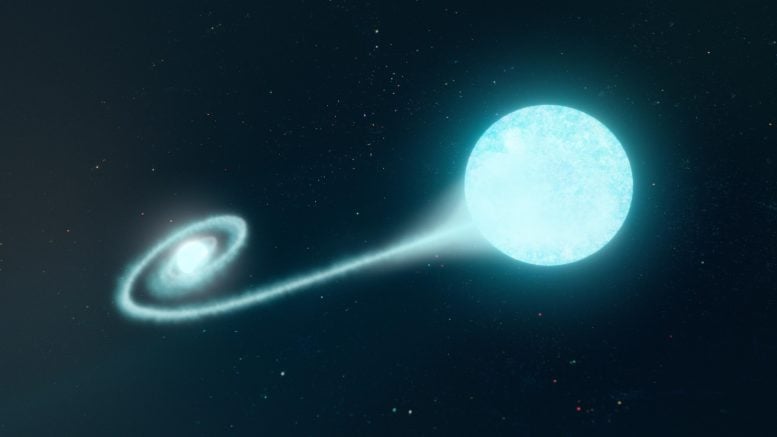
Artist’s impression of helium-rich material from a companion star accreting onto a white dwarf. Before the explosion, a large amount of material is stripped from the companion. The research team hopes to clarify the relationship between the emitted strong radio waves and this stripped material. Credit: Adam Makarenko/W. M. Keck Observatory
Astronomers have, for the first time, detected radio waves from a Type Ia supernova, uncovering new clues about white dwarf explosions and their helium-rich environments.
For the first time, astronomers have observed radio waves emitted by a Type Ia supernova, a type of explosion originating from a white dwarf star. This provides important clues to understand how white dwarfs explode.
The Science Behind Supernovae
A Type Ia (One-A) supernova is the nuclear explosion of a white dwarf star. This type of supernova is well known; these supernovae are used by astronomers to measure cosmological distances and the expansion of the Universe. However, the explosion mechanism of Type Ia supernovae is not well understood. Solitary white dwarfs don’t explode, so it is thought that mass accretion from a neighboring companion star plays a role in triggering the explosion. The accreted mass is the outer layer of the companion star, so it is normally composed mostly of hydrogen, but it was thought that it should also be possible for a white dwarf to accrete helium from a companion star that had lost its outer layer of hydrogen.
Mysteries of Material Accretion
As the white dwarf strips matter from its companion star, not all of the material falls onto the white dwarf; some of it forms a cloud of circumstellar material around the binary star system. When a white dwarf explodes in a cloud of circumstellar material, it is expected that the shockwaves from the explosion traveling through the circumstellar material will excite atoms, causing them to emit strong radio waves. However, although many Type Ia supernovae have been observed exploding within a cloud of circumstellar material, so far astronomers had yet to observe radio wave emissions associated with a Type Ia supernova.
Artist impression of the double star system with a compact white dwarf star accreting matter from a helium-rich donor companion, surrounded by dense and dusty circumstellar material. It was the interaction of the exploded star and the material left over from this companion that gave rise to the strong radio signal and the conspicuous helium lines in the optical spectra of SN 2020eyj. Credit: Adam Makarenko/W. M. Keck Observatory
Breakthrough Observations
An international team of researchers, including members from Stockholm University and the National Astronomical Observatory of Japan (NAOJ), performed detailed observations of a Type Ia supernova that exploded in 2020. They revealed that this supernova was surrounded by circumstellar material consisting mainly of helium, and also succeeded in detecting radio waves from the supernova. Comparing the observed radio wave strength with theoretical models revealed that the progenitor white dwarf star had been accreting material at a rate of about 1/1000 the mass of the Sun every year. This is the first confirmed Type Ia supernova triggered by mass accretion from a companion star with an outer layer consisting primarily of helium.
Future Implications and Research Avenues
This observation of radio waves from a helium-rich Type Ia supernova is expected to deepen our understanding of the explosion mechanism and the conditions before a Type Ia supernova. Now the reach team plans to search for radio emissions from other Type Ia supernovae to elucidate the evolution that leads to the explosion.
These results appeared as Kool et al. “A radio-detected Type Ia supernova with helium-rich circumstellar material” in the journal Nature.
For more on this research:
- Radio Signal Reveals Origin of Thermonuclear Supernova Explosion
- First Detection of Radio Waves From Type Ia Supernova
- Unraveling the Origins of a Supernova
Reference: “A radio-detected type Ia supernova with helium-rich circumstellar material” by Erik C. Kool, Joel Johansson, Jesper Sollerman, Javier Moldón, Takashi J. Moriya, Seppo Mattila, Steve Schulze, Laura Chomiuk, Miguel Pérez-Torres, Chelsea Harris, Peter Lundqvist, Matthew Graham, Sheng Yang, Daniel A. Perley, Nora Linn Strotjohann, Christoffer Fremling, Avishay Gal-Yam, Jeremy Lezmy, Kate Maguire, Conor Omand, Mathew Smith, Igor Andreoni, Eric C. Bellm, Joshua S. Bloom, Kishalay De, Steven L. Groom, Mansi M. Kasliwal, Frank J. Masci, Michael S. Medford, Sungmin Park, Josiah Purdum, Thomas M. Reynolds, Reed Riddle, Estelle Robert, Stuart D. Ryder, Yashvi Sharma and Daniel Stern, 17 May 2023, Nature.
DOI: 10.1038/s41586-023-05916-w

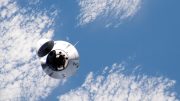
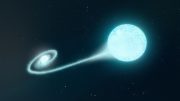
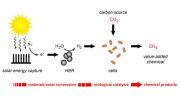

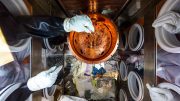
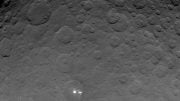
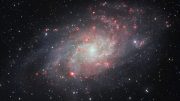
Be the first to comment on "Unprecedented Radio Wave Detection From a Type Ia Supernova"